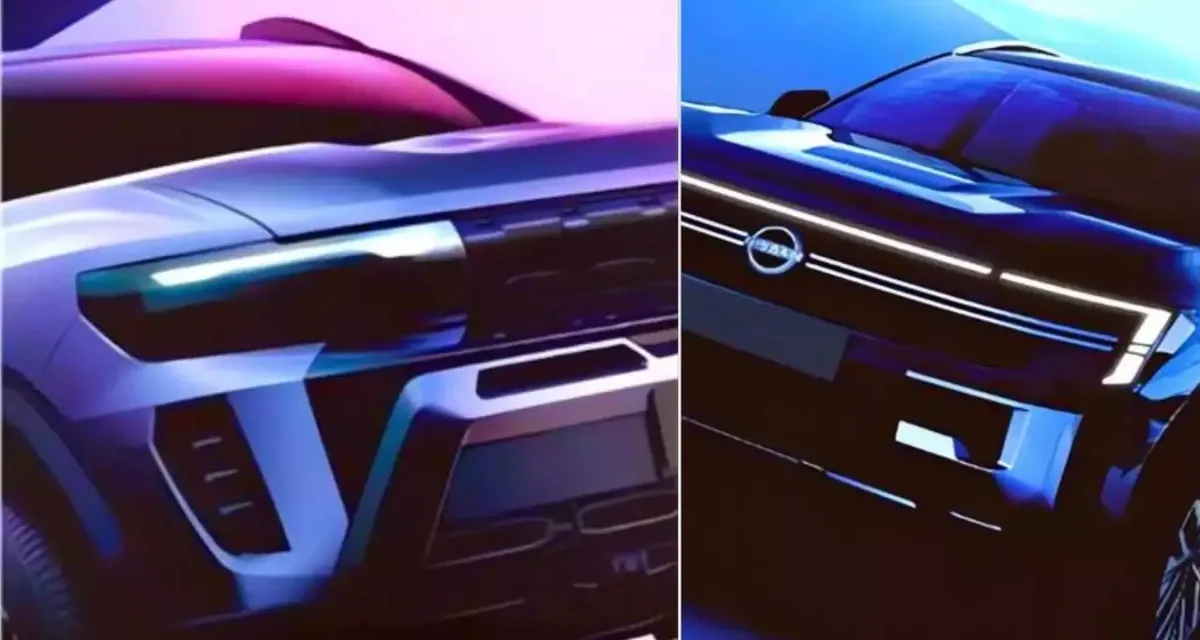

In a strategic move to fortify their positions in the Indian midsize SUV market, France's Renault and its Japanese ally Nissan are gearing up to launch their new SUV models by 2025. These vehicles, which will include the highly anticipated new Renault Duster and an as-yet-unnamed Nissan counterpart, promise to stir the segment with their advanced features and distinct brand positioning. Recent updates reveal that while both SUVs will share several foundational elements, Nissan's offering is set to be more upmarket than Renault's Duster, marking a clear differentiation strategy for the two automakers.
Both the Renault Duster and the Nissan SUV will be built on the heavily localized CMF-B platform. This shared architecture allows for efficient production and cost savings, but each vehicle will be tailored with unique brand-specific design and features to appeal to different segments of the market.
Under the hood, the SUVs are expected to offer three petrol engine options: the 1.0-litre HR10, the 1.3-litre HR13 turbo-petrol, and a 1.5-litre naturally aspirated petrol engine. The choice of engines highlights the brands’ focus on providing versatile performance options to cater to varied customer preferences.
Renault and Nissan are following a strategy similar to the Maruti-Toyota partnership, where shared platforms are differentiated through distinct styling and feature sets. According to sources, Nissan’s SUV will feature more upscale specifications and premium options compared to the Renault Duster. This includes superior upholstery materials, advanced technology packages, and potentially fewer but more feature-rich variants.
The entry-level 1.5 NA engine is expected to be exclusive to the Duster, positioning it as a more accessible choice in the midsize SUV category. In contrast, Nissan's SUV will likely focus on higher-end trims, making it a rival to models like the Honda Elevate, Skoda Kushaq, and VW Taigun, which start around the Rs 11.59 lakh mark.
Renault’s Duster will target the budget-conscious midsize SUV segment, directly competing with the naturally aspirated petrol versions of the MG Astor and Maruti Suzuki Grand Vitara, which start at Rs 9.98 lakh and Rs 10.99 lakh, respectively. This pricing strategy will make the Duster a formidable player among more affordable options.
On the other hand, Nissan's SUV, with its higher-end features, will appeal to customers looking for a more luxurious experience in the midsize SUV market. This premium positioning is expected to attract buyers who are considering the higher trims of competitors like the Honda Elevate, priced at Rs 11.69 lakh and above.
Both SUVs will showcase distinct design philosophies, reflecting their brand identities. The new Renault Duster for India, previewed in teasers, exhibits similarities to its international counterpart but with localized tweaks such as a revised headlight design and a restyled front bumper. These changes aim to align the Duster with Indian market preferences while maintaining its global appeal.
Nissan’s SUV will feature a more futuristic aesthetic, characterized by L-shaped LED daytime running lights (DRLs) connected by an LED light bar across the front. This modern and bold design is likely to appeal to customers seeking a stylish and contemporary look in their vehicle.
Beyond the standard five-seat configurations, both brands are planning to introduce seven-seat versions of their SUVs. The Duster’s seven-seat variant, inspired by the Bigster concept, is expected to launch in India by 2026. Consistent with the five-seat models, Renault’s seven-seater will likely be more affordable, while Nissan’s counterpart will offer a premium alternative, potentially competing with the likes of the Hyundai Alcazar.
As Renault and Nissan prepare to bring their new midsize SUVs to India, their differentiated approaches promise to cater to a wide range of consumer needs. Renault’s Duster will provide a cost-effective yet capable option for the masses, while Nissan’s SUV will target those seeking a more luxurious and feature-rich experience. This strategic positioning is set to enhance their appeal in India’s diverse and competitive automotive market.
Also Read: